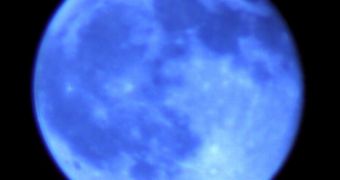Many people may have heard the phrase "Once in a blue Moon," or at least the shorter version "blue Moon." But is there little such thing as a blue Moon? On May 31, the second of two full Moons this month will be visible from the North America and for those living in Europe, Africa, Asia and Australia, that same full Moon occurs after midnight, on the calendar date of June 1.
As you probably guessed, the Moon doesn't just change its color overnight. It's a common metaphorical phrase for a rare event that really has little to do with the moon itself. This is an extra full moon that occurs in a quarter of the year, which would normally have three full moons, but sometimes has four. Oddly, it is the third full moon in a season that has four which is counted as the "extra" full moon and named blue moon.
According to certain folklore, it is said that when there is a blue moon, the moon has a face and talks to the items in its moonlight.
After an extraordinary event, such as forest fires or volcanic eruptions, the Moon can appear to take on a bluish or even lavender hue. It's these ash particles that reach the atmosphere and can sometimes make the Moon appear bluish because of light distortion from space to the atmosphere.
Smoke from widespread forest fire activity in western Canada created a blue Moon across eastern North America in late September 1950. In the aftermath of the massive eruption of Mount Pinatubo in the Philippines in June 1991 there were reports of blue moons (and even blue Suns) worldwide.
The blue Moon is not so uncommon as people may think. In fact, this happens on average, about every 32 months. But there is not a regular interval for their appearance. For instance, in the year 1999, it occurred twice in a span of just three months and the next one will occur on December 31, 2009.

 14 DAY TRIAL //
14 DAY TRIAL //